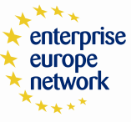The research group Carbon Materials and Environment which belongs to the Inorganic Chemistry Department and the University Materials Institute of the University of Alicante has developed a new procedure for the preparation of sensors in order to detect gaseous hydrogen in a simple, economical and efficient way. The main advantages of this technology are the robustness, simplicity and reliability of the prepared sensors and it can be used in the following industrial sectors: automotive, energy, gas separation, gas production and fine chemistry. The research group is looking for companies acquiring this invention for: commercial agreement or technical assistance or manufacturing agreement or technical cooperation or a combination of some of these services.
Nowadays the use of H2 is one of the most promising alternatives to replace fossil fuels in the energy industry. The present energy perspectives focus on the production of H2 by the electrolysis of water through renewable energy sources and the reforming of hydrocarbons such as ethanol or other organic compounds. However, H2 is a colourless and odourless gas, with high diffusivity, highly flammable at concentrations above 4% vol., and explosive over a wide range of concentrations (15-59 %) at standard atmospheric pressure. Therefore, safety issues concerning its generation, transport, storage and use must always be considered. There is a wide variety of H2 sensors capable of measuring different kinds of signals usually based on materials such as optical fibers or semiconductors. Continuous efforts are being made in order to improve sensitivity, selectivity, response time and reliability, as well as diminishing production costs, size and power consumption of the devices, to meet the demands of a future H2 economy scenario. In this situation, CNTs can be presented as an alternative towards the development of devices designed for the detection of gases including H2. In this sense, the preparation of CNT-based gas sensors has been widely studied and reported in the literature.
(See more information related in document attached).
The method employed to prepare this kind of sensors has proven to be very simple to give rise to highly sensitive sensors which perform with very high reproducibility under realistic conditions. The nature of the suspension of the SWCNT has a paramount influence over the samples behaviour. The sensors prepared from the water suspension show an enhanced sensitivity with respect to DMF-based systems, due to the higher degree of dispersion of the SWCNTs and the characteristics of the nanoparticles/polymer/SWCNT system.
N.A.
The present invention deals with a novel, simple and efficient procedure for the synthesis of devices for the detection of gaseous hydrogen with special interest for the industry related to sensor fabrication and the detection of chemical substances, which moreover presents a low production cost per sensor.
Among other applications, the prepared sensors may be used as safety devices in any industry or application which uses, produces, or stores hydrogen, such as:
• Hydrogen-powered vehicles
• Hydrogen fuelling stations
• Hydrogen generation and storage stations
• Transportation and storage systems (deposits, low and high pressure cylinders, compressors, pipelines, etc.)
• Industrial vehicle battery charging zones
• Electrical power station transformers
• Systems for the analysis and measurement of gases
Rodriguez Roselló, Iván







